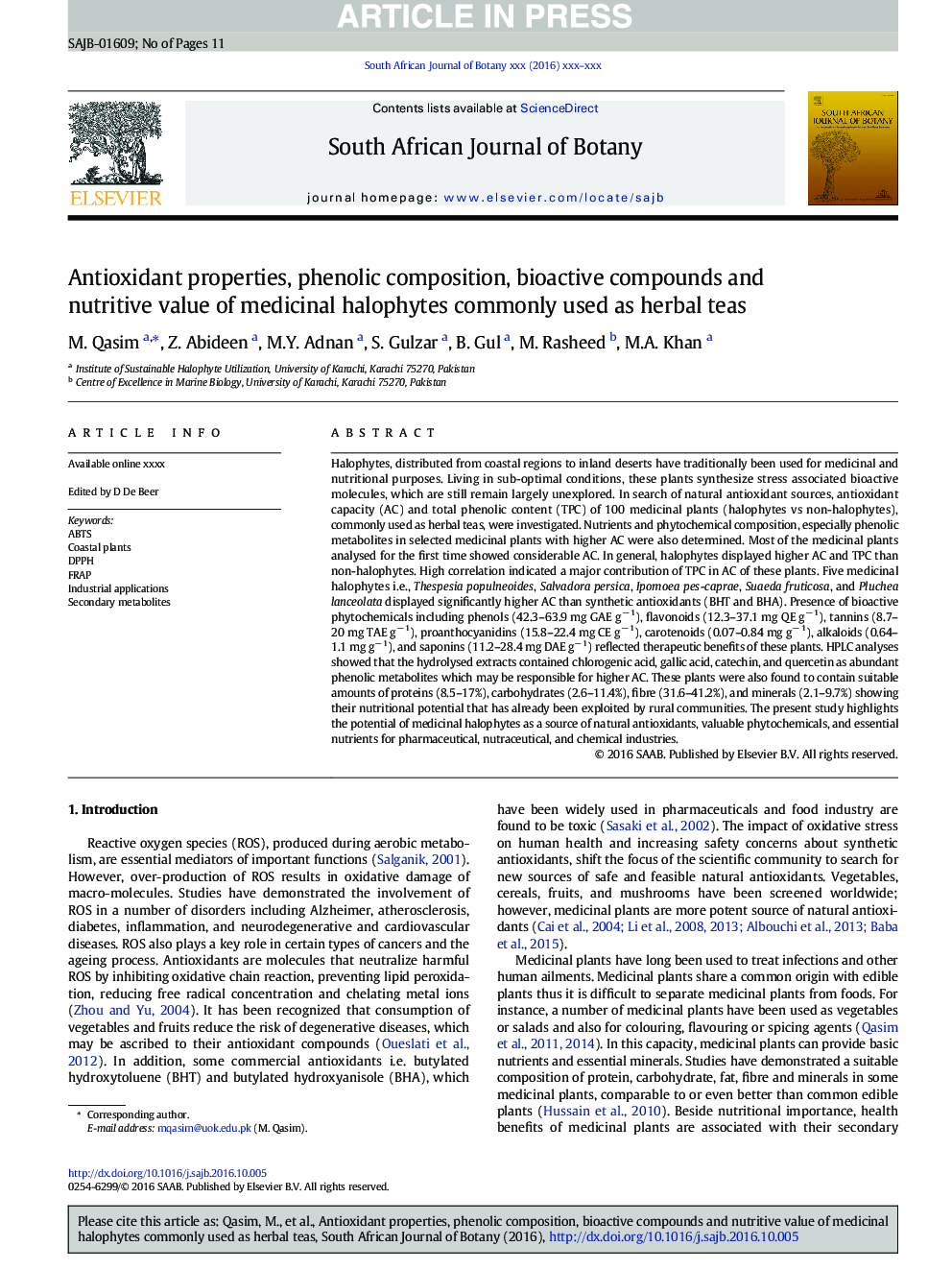| Article ID | Journal | Published Year | Pages | File Type |
|---|---|---|---|---|
| 5763019 | South African Journal of Botany | 2017 | 11 Pages |
Abstract
Halophytes, distributed from coastal regions to inland deserts have traditionally been used for medicinal and nutritional purposes. Living in sub-optimal conditions, these plants synthesize stress associated bioactive molecules, which are still remain largely unexplored. In search of natural antioxidant sources, antioxidant capacity (AC) and total phenolic content (TPC) of 100 medicinal plants (halophytes vs non-halophytes), commonly used as herbal teas, were investigated. Nutrients and phytochemical composition, especially phenolic metabolites in selected medicinal plants with higher AC were also determined. Most of the medicinal plants analysed for the first time showed considerable AC. In general, halophytes displayed higher AC and TPC than non-halophytes. High correlation indicated a major contribution of TPC in AC of these plants. Five medicinal halophytes i.e., Thespesia populneoides, Salvadora persica, Ipomoea pes-caprae, Suaeda fruticosa, and Pluchea lanceolata displayed significantly higher AC than synthetic antioxidants (BHT and BHA). Presence of bioactive phytochemicals including phenols (42.3-63.9 mg GAE gâ 1), flavonoids (12.3-37.1 mg QE gâ 1), tannins (8.7-20 mg TAE gâ 1), proanthocyanidins (15.8-22.4 mg CE gâ 1), carotenoids (0.07-0.84 mg gâ 1), alkaloids (0.64-1.1 mg gâ 1), and saponins (11.2-28.4 mg DAE gâ 1) reflected therapeutic benefits of these plants. HPLC analyses showed that the hydrolysed extracts contained chlorogenic acid, gallic acid, catechin, and quercetin as abundant phenolic metabolites which may be responsible for higher AC. These plants were also found to contain suitable amounts of proteins (8.5-17%), carbohydrates (2.6-11.4%), fibre (31.6-41.2%), and minerals (2.1-9.7%) showing their nutritional potential that has already been exploited by rural communities. The present study highlights the potential of medicinal halophytes as a source of natural antioxidants, valuable phytochemicals, and essential nutrients for pharmaceutical, nutraceutical, and chemical industries.
Related Topics
Life Sciences
Agricultural and Biological Sciences
Agronomy and Crop Science
Authors
M. Qasim, Z. Abideen, M.Y. Adnan, S. Gulzar, B. Gul, M. Rasheed, M.A. Khan,
